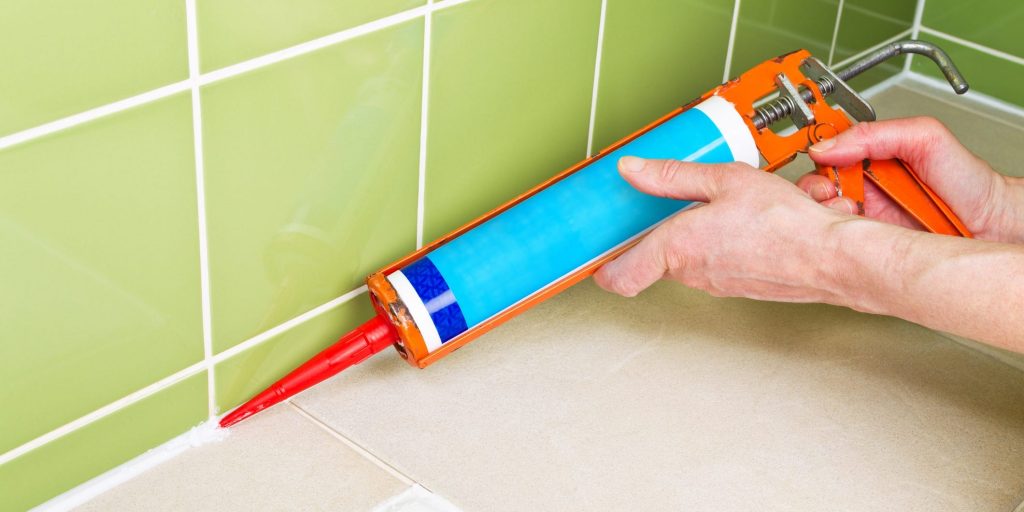
lucentius/Getty Images
- Caulk guns make it easy to create a waterproof seal around sinks, windows, tubs, and more.
- Make sure you are using the right type of caulk for the job – like silicone caulk for bathrooms.
- Caulk guns dispense the product neatly and without waste.
- Visit Insider's Home & Kitchen Reference library for more stories.
Caulk is a waterproof sealant used to fill in cracks and gaps around sinks, tubs, windows, counters, and more in your home. Depending on the type of caulk you use, you can also use it outdoors to seal siding, concrete, and masonry.
Using a caulk gun might seem intimidating if you are inexperienced with home improvement. You might have visions of spewing sealant over everything but the actual opening you are trying to seal. But a caulk gun is quite simple to load and use.
"Caulking guns have evolved over the years," says George Esposito, owner of Canal Kitchens in Staten Island, NY. He notes that with older models, unless you remember to pull back on the rod, the caulk will continue to flow. "[Manufacturers] make guns today that when you release the trigger, the plunger automatically backs up and will not force the product to ooze out," he says.
Because a caulking tool is so easy to use, applying caulk is an easy DIY project for beginners and just requires the right type of caulk, an inexpensive caulking gun, and a little practice.
How to choose the right type of caulk

kali9/Getty Images
- Rubber (butyl) caulk: Appropriate for outdoor use as filler for asphalt, aluminum gutters, and roof flashing. To clean up excess, use mineral spirits, an inexpensive, petroleum-based material that works as a paint thinner. Note: The solvents in rubber caulk are highly toxic and flammable, so do not use them indoors.
- Latex caulk (including vinyl latex and acrylic latex, also known as painter's caulk): Good for just about all interior sealing needs and some exterior applications, like siding and trim. It's easy to use and needs only a wet rag for cleanup. Latex caulk comes in a variety of colors to match the connecting materials. It can also be painted.
- Silicone caulk: Best for sinks, tubs, and showers, as well as a home's exterior and aluminum gutters. It's also good for use on glass and other nonporous materials. Only water-based silicone can be painted, and cleanup requires use of mineral spirits.
- Polyurethane sealant: Ideal for use on windows, vinyl siding, concrete, and masonry. It is stronger than silicone, resists shrinking, and can be painted or stained. It can be difficult to apply, though, and mineral spirits or a solvent is required for cleanup.
Insider's takeaway
It's easy to get a handle for using a caulk gun. Sealing up joints, cracks, or other gaps in your home can certainly be a DIY project even for a beginner, provided you use the correct type of caulk. If you are unsure, talk to an associate at the hardware store about the nature of your project so you can purchase the right sealant for the job.
